Stig Stasig chooses Epson Stylus Pro 9900
Art and creativity are a lot of things. Paintings, casting, design, scrap – and in the middle of the creative chaos is Stig Stasig, working with photogravure etching. Stig has been a photographer for 28 years – dating back to the time when you worked with photographs in a completely different way, in the darkroom, where you could actually work physically with the pictures.
Desire to make a living from art"It was purely by chance that I came to work with photogravure. Suddenly, the profession developed, and my photographic life became digitised. Photoshop and digital cameras made photographs too perfect. I could feel my relationship and my love for photography becoming increasingly volatile, because I did not actually touch anything any more. I obviously need to work physically on my photographs to be able to influence them, and photogravure allows me to do that completely. I hope that I will make a living 100% from my workshop one day," says Stig.
A straightforward process
Beautiful photographic art adorns the walls of the workshop, and large machines are all around. The first thing you see when you enter the room is an imposing Epson large format printer. In one corner is Stig's old German Breisch copperplate printing press, and there is also an industrial cutter, a photo plate drying rail and a separate UV lighting room – this is a serious workplace.
"The actual process of producing a photogravure etching requires concentration. It's not really a very complicated process; anyone could figure it out with the right tools. But make just one mistake when you are producing the plate and you may have to throw it away and start all over again. But that's what I like about it – it’s a challenging process. And when the completed print comes out of the press and reveals more than I expected, that’s art for me – to get the pictures to live in their own way in their new graphic life. I think that I’ve succeeded when I’ve given my pictures both body and soul," says Stig Stasig.
Photogravure
Photogravure may not be an art form that everyone knows about, but it is an art form that has existed virtually since the invention of photography. Of course, a lot has happened since then – and modern machines make it possible to produce prints in a far more precise and challenging way.
"I don’t produce the photogravure plates in the traditional way. The image files used to be first transferred to film, that was then contact printed onto polymer plates – and that degraded their quality. I thought that there had to be a way to print directly onto the plate. You could call it a home-made, poor man's CTP process. What I did was to remove the intermediate stage, the film, and instead use an Epson Stylus Pro 9900 printer to print directly onto the plates," says Stig. He continues: "The Epson Stylus Pro 9900 is ideal because it can print on media up to 1.5mm thick – for example, polymer plates. It can print flat without bending the media. The advantages are that I do not lose quality by having to transfer the image an extra time; I'm not limited by the dimensions of vacuum frames, because I don't have to use them; and on top of that it's even cheaper."
The Epson Stylus Pro 9900 was clearly the best choice for the process, and I couldn’t possibly manage without it. At the same time, it can also print very large plates, which is great for me and also a requirement from my plate customers. When I visited Epson, it took me less than 10 minutes to find out that it was possible to print directly onto plates on the big printer, but, on the other hand, it has taken me more than a year of hard work to develop the technique to perfection,” says Stig.
See Stig’s art at www.stasig.dk
Article Information
DATE PUBLISHED
Case study downloads
Key facts
- The Epson Stylus Pro 9900 can print on media up to 1.5 mm thickness The advantage is that you do not have to transfer the image an extra time No limits related to the dimensions of vacuum frames

 Previous post in category
Previous post in category

 Back
Back


